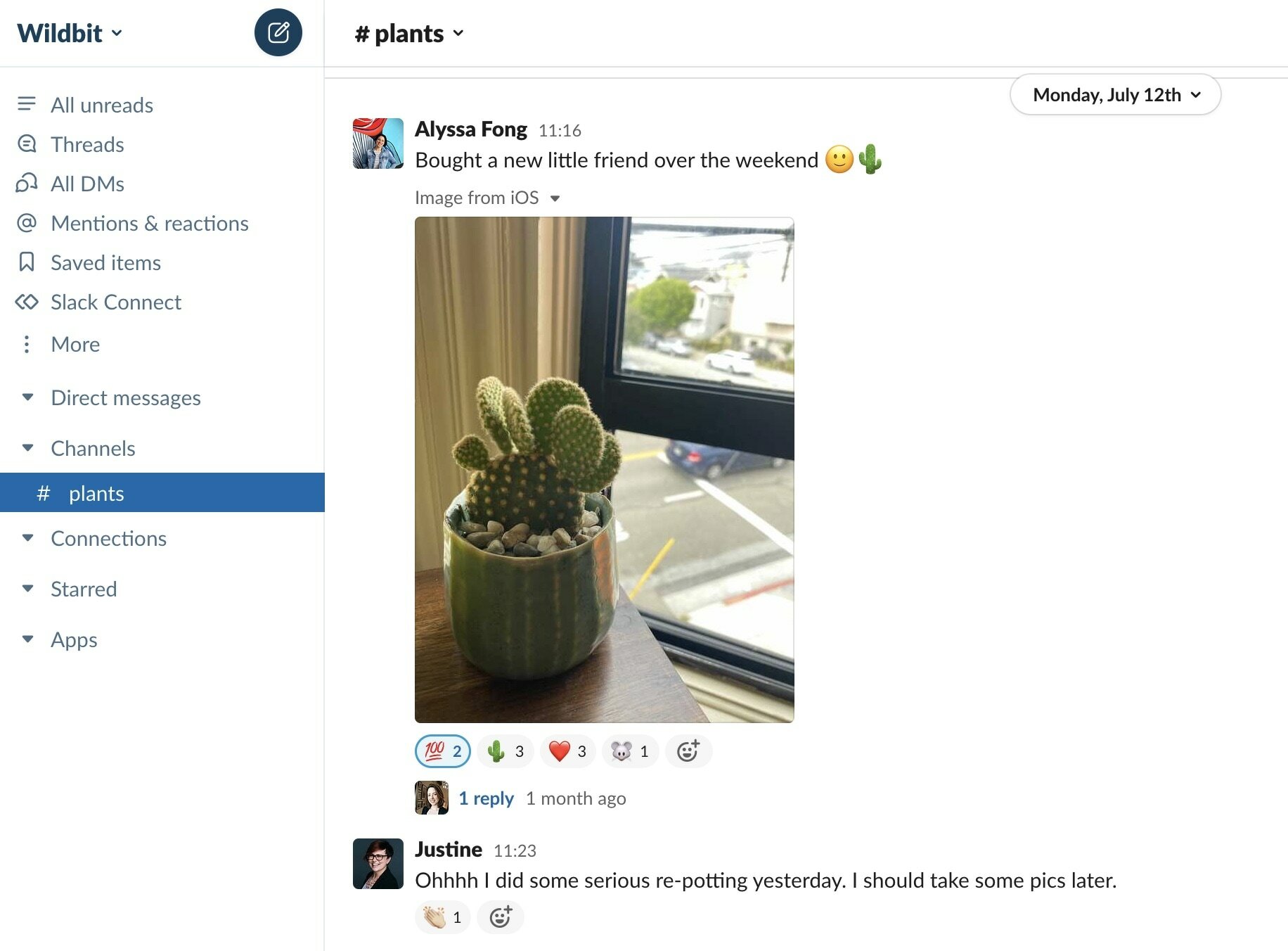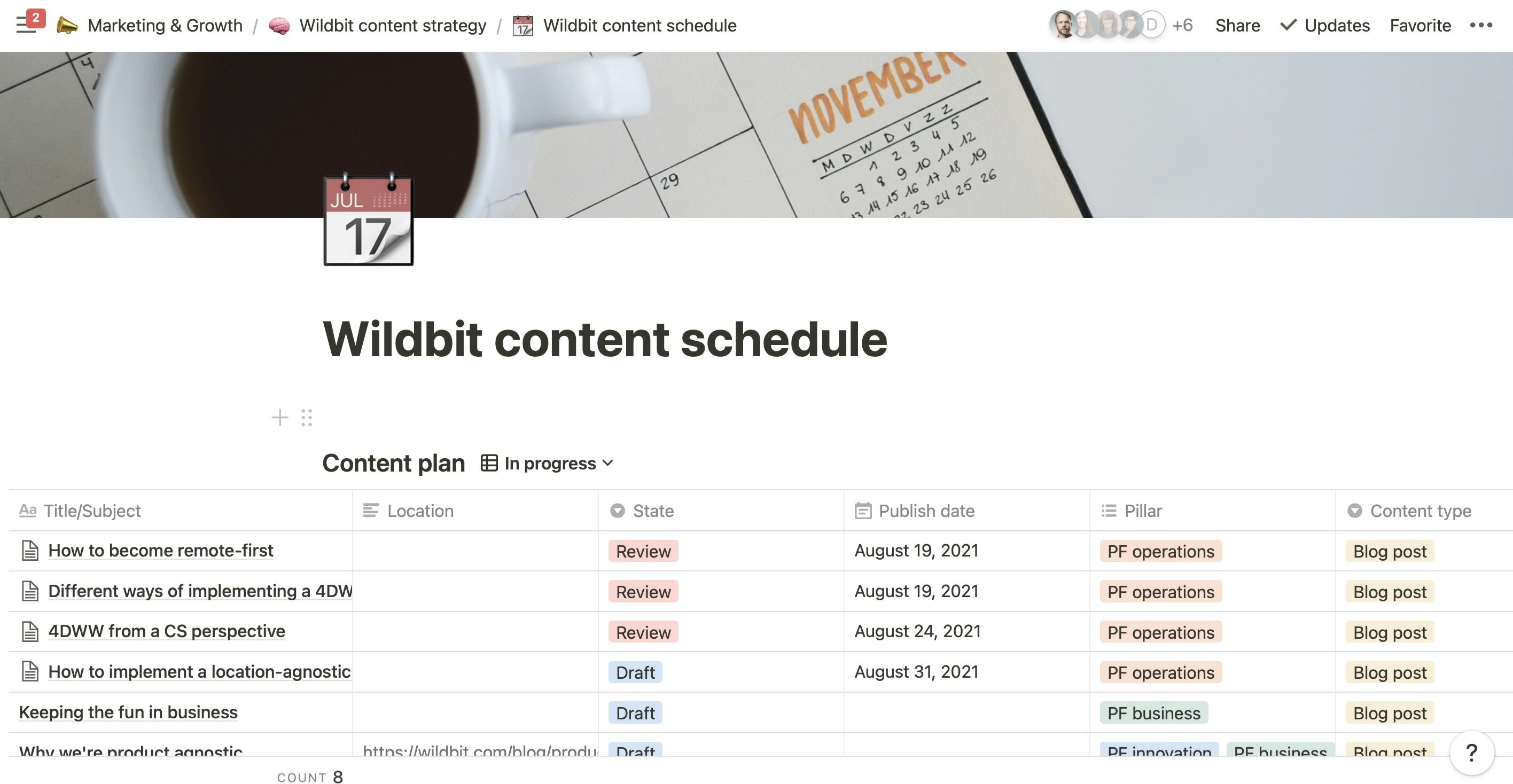As we all attempt to reemerge from the past 18 months of COVID19-induced restrictions, our collective focus turns to work and "getting back to normal."
Precisely what that looks like is still very much up for debate. Some companies are mandating a return to the office for all employees (and potentially facing a large number of resignations as a result), while others are happy to let their workforce continue working from home after the successful trial-by-fire presented by the pandemic; others still are trying to achieve a balance between the two options by implementing hybrid policies.
Deciding that a remote or hybrid setup will be the future of your company is a huge step—and the inevitable follow-up question is: what do I need to know to actually make it happen?
How to do remote work (the people-first way)
Remote work isn’t just about moving what you did in the office to an online format (for example, move meetings to Zoom): it’s about re-thinking how and why you do certain things and bringing that intent into a remote format.
Here, we’ll explore five key principles of remote work through a people-first lens; we’ll examine some of the key considerations to bear in mind when drafting remote-work policies and share practical advice from our team and the folks at Doist, Alley, and Animalz who spent years building and working at remote-first companies.
1. Act like everyone works remotely, even if they don’t
Inclusion and cohesion are critically important to people-first remote-work policies. Being remote-first (not just remote-friendly) means that all team members should feel equally engaged, prioritized, and supported, whether they’re working across the hall or across an ocean. In practical terms, this means that if even a single team member works remotely, then everybody does.
Take meetings, for example. You may have three-quarters of your team in the office and the rest at home, and your goal is to make sure everybody can join, regardless of where they are. So what do you do? You implement a policy that meetings will take place via Zoom or another video conferencing tool.

Admittedly, this may feel a little strange at first. Should folks working in the office join video calls individually or as a group? Based on our experience, we recommend that all participants join individually: intentionally or otherwise, it’s all too easy for people who are in the same location to favor speaking with one another, potentially alienating remote attendees (and that’s before we acknowledge that if remote workers are excluded from something as small as a Zoom call, they are likely excluded from larger opportunities, like career progression and promotions, too).
What about benefits, perks, or other hybrid-versus-in-person practices? We asked the team at Alley, who is now fully distributed but used to have a hybrid structure in place.
How Alley made sure remote and in-office folks members felt part of the same team
“The most important thing was making sure there would be equality between in-person and distributed team members.”

In-person benefits were balanced with remote perks such as equipment assistance, coworking-space memberships, and more. For instance: early on, we only provided lunch for those in our New York office. When we realized this gave those employees a benefit others didn’t have, we tried cutting lunch for the office. It was ultimately ineffective and had unintended consequences (such as no one actually using the space), so we went the other direction: to make it equal, we provided an equivalent lunch stipend for each remote worker.
Almost all communication took place via Zoom video calls and Slack chat, our main communication tools, even among staffers who worked in shared offices. Visitors to locations where Alley staffers shared a physical space remarked on how quiet it was—everyone was communicating online. This helped us all have the same experience, whether we were working from a coworking space in North Carolina, a house in Texas, or an apartment in New York City.
We ensured that our conference rooms were set up well for video chats, clear to watch and clear to hear. Too many times, we have had the experience of calls that only some people could hear, or that have malfunctioning video or other problems that leave remote workers out of the conversation. We wanted to ensure an even playing field for all participants in a way that is often lacking in voice-only calls or video calls without the proper setup.”
2. Provide space for personal connection—but don’t force it
Many founders talk about the importance of “serendipity” in the workplace—the magic that supposedly happens due to chance encounters in the hallway—and how random interactions can surface potentially world-changing ideas. According to some, remote work could even destroy (!) Silicon Valley. As Steve Levine put it:
“The Valley’s scrappy startups, the small, currently nameless teams working long hours on an idea developed only on paper, do hope for a bit of kismet to stave off failure and, if the stars can possibly align, make them the next big thing. If the founders, engineers, and designers in such startups are laboring entirely or largely from their own homes, and miss their moment, doesn’t Big Tech potentially lose its next big growth machine?”
We’ve heard this argument before. And the question we like to ask is: how often does this really happen? And is it often enough to force people to conform to working arrangements that no longer align with their lives or values?
We believe remote work is people-first, which means prioritizing employees’ whole selves—not just how they can benefit the company. Critics of remote work often use the perceived distance between remote colleagues as one of the strongest arguments against it; but we like to point out that it’s easy to conflate being among people in an office with having meaningful, interpersonal interactions. Similarly, it’s true that remote employees can’t just drop by one another’s desk to have a spontaneous chat… but it’s also equally true that not everybody in an office likes it when this happens.
With a team of 30+ all over the world, we found that creating space for personal connections to happen (but not mandating they happen—very few people would enjoy being forced to eat lunch together over Zoom!) helps recreate some of the ‘bumping into someone’ effect that would happen in an office. This includes creating public and/or off-topic Slack channels to chat about pets or hobbies or carving out some time for non-compulsory watercooler-style video chats where teammates can get to know each other better. We also use (and recommend) Know Your Team, a great tool for creating connections and getting to know one another.

Regular retreats are another popular fixture at many remote companies—we, too, have been running annual retreats since 2007, and many of us eagerly look forward to seeing our colleagues. However, despite their considerable potential in terms of team-building, regular retreats aren’t possible for all remote companies, as travel costs can be prohibitively high for smaller startups or companies with lower revenues (not to mention the fact that, while many people enjoy face-to-face socializing, others find such gatherings uncomfortable or intimidating).
On top of that, the COVID-19 pandemic forced most companies to opt for virtual retreats. This is a much more budget-friendly (and introvert-friendly) option but may not work as well for the more social folks. So you see—when you work remotely or in a hybrid setting, the issue of how to encourage but not enforce personal connections and make sure everybody feels included is often top of mind. We’ve been thinking about these topics for years, long before a pandemic stopped us all in our tracks, and we still don’t feel we’ve really figured it out.
When we asked them for tips, the (fully remote) team at Doist shared a great list of activities that can help create bonds between remote coworkers.
How the team at Doist creates strong personal connections in a fully remote setting

As a fully remote team, we’ve been intentional about building culture at Doist and forming close-knit bonds across time zones, both synchronously and asynchronously. We’ve rejected the ethos that “culture” only happens around the in-office ping-pong table or at after-work happy hours. Instead, culture-building and forming personal connections at Doist is a continuous and evolving process that’s ever-present and baked into everything we do.
Here are a few synchronous examples:
- Company-wide Retreats: Each year, our entire remote team assembles for a week-long, all-expenses-paid retreat somewhere in the world. Past retreats include travels to Iceland, Greece, Chile, and Portugal. These serve as an opportunity to bond with the entire team, meet new people, and participate in fun pre-planned activities. While there are periods for work break-out sessions, talks, and guest speakers, these retreats are largely a culture-building activity to build rapport and camaraderie.
- Monthly Casual Hang-Outs: Introduced during the pandemic, these monthly hangouts are coordinated by PeopleOps for cross-company socializing. Groups of 3-4 are generated at random, and each group plans a time to meet for 30-60 mins of free-range conversation. These hang-outs are voluntary and allow Doisters to break out of their departmental silos and get to know team members they otherwise don’t work with.
- Doist Presents: Started as a means to connect the team as the pandemic wore on, Doist Presents is a series of workshops given by Doisters. Previous presentations include a virtual team workout, group yoga, a coffee workshop, and Udon noodle crafting.

Here are a few asynchronous examples:
AskDoist: This series of question threads helps spark written discussion at the company and helps us learn more about one another. Previous threads have asked questions like “What quotes do you live by?”, “What's your morning routine?”, and “which person do you admire?”
10 Facts About You Threads: New Doisters share a fun and interesting list of 10 things about themselves with the entire company when they join. This allows the team to learn more about them and build rapport.
Casual Discussion Channels: Doist has dedicated channels where team members can discuss everything from fitness and crypto to parenting and coffee.
Telephone Game: In a two-team rivalry with a referee, this asynchronous game of telephone includes having team members pass down a sentence from one person to the next. At the end, the team with the sentence that bears the most resemblance to the original wins! Recent renditions have included an awards ceremony.
3. Trust your team, and don’t monitor them
When the pandemic forced large numbers of employees to work from home, some employers started going down the troubling route of expecting them to be available at all times and answer emails, phones, or texts immediately. There’s even software that allows an employer to monitor their employees’ individual keystrokes and mouse cursor movements on a second-by-second basis. None of this has anything to do with either trust or respect, which are the foundations on which remote work is built.
To be clear, we believe monitoring employees’ computer usage is unethical, intrusive, and a violation of privacy regardless of where they are working (not to mention it can also be illegal in some regions). Especially when we know that the opposite—“collective felt trust,” or the general sense among employees that they are being trusted—has positive impacts on meeting and exceeding managerial expectations, increases productivity and employee engagement, drives stock performance and reduces turnover and improves team cohesion.
Trusting your team is a vital part of creating a healthy, inclusive culture. Nobody wants to work in a high-suspicion environment where their every move is scrutinized. But how does that work in a remote or hybrid setup, where people cannot see one another? We turned to the team at Animalz for their take on this.
How Animalz builds and maintains trust for 100+ remote employees

As an international remote-first company, trust is absolutely critical to everything we do at Animalz. It’s something we intentionally try to cultivate from every new hire’s very first day, and it extends through every aspect of how we work.
Autonomy is crucial for all our team members, and we give people the freedom to do their best work in ways that align with their lives without mandatory check-ins; perhaps surprisingly, there are very few formalized touchpoints at Animalz where people are expected to “prove” they’re online and working. Teams typically meet once per week, but there are no daily huddles or check-ins to ensure people are online and working.
When we were smaller, we encouraged people to share informal status updates in Slack when they knew they’d be away from their desks for a while. We ultimately decided against this once we reached 70 people or so; it no longer felt helpful and actually made some folks a little anxious about stepping away from their desks, which undermines the freedom and flexibility offered by remote work.
These days, people are welcome to be as transparent about their schedule as they feel comfortable doing, but it’s far from required—we’re much more focused on results than how many hours someone puts in on their keyboard. We do ask that our editorial staff share brief daily updates in Slack to let everyone know the status of the articles they’re working on, but this is purely to offer some additional visibility into our production pipeline rather than a means of checking in on where people are and how much work they’re doing.
Similarly, we encourage our people to take a strong sense of ownership over their work. Producing world-class content is a challenging, inherently creative process that doesn’t lend itself well to micromanagement, and we don’t want to needlessly interrupt people during focused periods of deep work just to check in on them; besides being enormously disruptive, constantly chasing people about the status of specific articles can create an atmosphere of tension and hostility, neither of which result in better work or align with our values as an agency.
To date, nobody at Animalz has ever abused the trust we place in our people. We often say that content is a team sport, and the best teams don’t win by treating their teammates with suspicion—they win by trusting each other to do their very best for each other and their clients.
4. Focus on outcomes, not output
Many managers assume that, just because people are at work, they’re doing meaningfully productive work. This isn’t always the case.
Even optimistic estimates state that most knowledge workers can only handle around three hours of focused work per day. Ironically, mandating longer hours in an attempt to increase productivity often has the exact opposite effect. With such stark differences between perceptions of how much work is done versus actual productivity, remote or hybrid business leaders need to shift their focus from output to outcomes.
Generally speaking, when we talk about output, we’re referring to the quantity of work produced, whereas outcomes focus on its quality. For us at Wildbit, improving outcomes typically means focusing on and creating space for “deep work,” the kind of work that requires focused concentration and minimal distractions.
“Deep work is the work we hire people to do; the specializations and expertise that define careers and helps businesses grow. Deep work is what a writer does when they write or an artist does when they paint or, in the software world, what a developer does when they write code.”
— Natalie Nagele, co-founder, Wildbit
The concept of deep work is pivotal to everything we do at Wildbit: it dictates how we structure our days (and underpins our 4-day workweek), how we plan as a business, and how we hire.
We do everything we can to ensure our people have the time and space they need to really focus and do their best work, so they can truly rest after doing so.
Outcome-based evaluation frameworks will differ from one company to another and even one team to another. Some outcomes will be quantitative, such as quarterly revenue targets for salespeople or the click-through rates of paid social ads; others will be qualitative, such as the quality of a developer’s code or the editorial standards of a white paper. However you choose to evaluate your teams’ success, try to focus on metrics that will have a tangible impact on your business rather than how many hours your team has worked—they’re rarely one and the same.
5. Prioritize asynchronous communication (but stay flexible)
Start discussing remote work and it probably won’t be long before the topic of asynchronous communication—when one party shares information with another without expecting an immediate reply—comes up.
Asynchronous communication is platform-agnostic (meaning it’s not dependent upon or restricted to specific tools or channels), but the term usually describes communication that happens via project management and documentation tools like Google Docs or Notion. Even Slack can be treated as an async channel if you are not expected to be there to reply as soon as a notification pops up.
One of the primary reasons many remote companies prioritize asynchronous communication is a practical necessity: time differences (when I wake up in British Columbia, my colleague Bettina is almost ready for dinner in Germany). For example, we used Notion to keep track of progress for this very blog post so that any one of us could follow the status in their own time without missing crucial information:

Aside from logistics, asynchronous comms are also useful for another reason: they are not disruptive and don’t carry the expectation of a near-immediate response, and they are ideally suited to companies that prioritize deep work. The team at Doist puts it this way:
“High-value, cognitively-demanding activities—like coding, writing, designing, strategizing, and problem-solving—require long periods of deep, focused work. Synchronous communication requires constant context switching and makes creating large, uninterrupted chunks of time during the workday impossible.”
This problem of disruption caused by synchronous communication is as cultural as it is operational. While it’s true that many of us knowledge workers check our email far too often, this often stems from misaligned managerial expectations, fear of missing an important message, or concerns we’ll be perceived negatively for failing to respond quickly enough.
Asynchronous communication isn’t just a convenience or practicality for remote teams: it’s also a rejection of the always-on hustle culture that blurs the line between our personal and professional lives. Relying on asynchronous communication allows employees to prioritize both personal and professional tasks—when the cultural expectation that delays are acceptable has been established, it doesn’t matter if someone can’t respond to a message because they’re in a meeting or because they’re picking up their kids from school.
Let’s hear it once more from the team at Doist, who have truly mastered the art of async communication—they even built a tool for it.
How the team at Doist uses async communication with great results
Doist is an asynchronous-first company: anywhere from 75 to 80% of our communication happens in writing through Twist, our team communication tool. Everything from project updates to feedback to proposals occurs asynchronously.
This system has allowed us to operate smoothly as 94 full-time team members residing in 33 countries and 77 cities. We’re timeline agnostic, which creates an environment where everyone’s voice can be heard: the best idea wins, not the loudest [or the first one to be shared]. We emphasize the importance of deep work and have a 24-hour window for people to respond to messages.
However, there are certainly opportunities for synchronous discussions: monthly one-on-ones between Heads and their reports happen over Google Meet, as do occasional team meetings ranging from once a week to once a month, depending on the team. Team meetings are often recorded, allowing people who can’t attend to catch up later.
If a conversation is getting convoluted and complex, there’s flexibility to jump on a call and sort it out live. We certainly think there’s value in both synchronous connection and asynchronous communication, but the balance is skewed at most companies.
Remote work is people-first
While every company is different, we’ve found that the factors that successful remote-first companies have in common are trust, respect, and a shared sense of purpose—not which tools they use or what schedule they maintain.
However, what works for one company may not necessarily work for another, so it’s important to consider the needs of your team before making any firm decisions. Ideally, you should consult your employees to gain greater insights from different perspectives and avoid making generalizations or assumptions about how people prefer to work.
Similarly, if you’re thinking about introducing longer-term remote-work policies, you should probably know that very few companies nail every aspect of remote work right out of the gate. An iterative approach and a culture of curiosity and willingness to adapt and respond are crucial to the long-term success of remote work. The folks at Alley share this final tip:
“Continuous improvement” [...] is something teams should always be striving for. Set aside some time each month, each quarter, and each year to think about how you work. This means examining your processes, the tools you use, and even your mindset and the context in which you work.
If you’re interested in learning more about remote work and how to navigate it, the Wildbit newsletter is a great resource for those who are building people-first, remote-first companies. We’re passionate about helping businesses—and the humans involved—thrive no matter where they are, and we welcome all who want to join us on our journey toward a more fulfilling, more human way of working.

